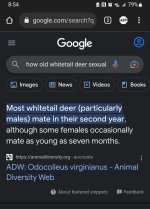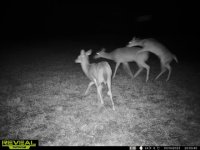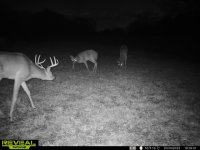Stang
Senior Member
I saw a buck chasing a small doe hard this morning in South Cherokee. He was giving her fits, chasing her in circles in a pasture. Someone in the area may see a little one with spots come Thanksgiving. A question that comes to mind that maybe @C.Killmaster might be able to answer: will this doe continue to cycle each year this late or will she eventually cycle when the majority of the does cycle in the area? and if so, how long will that take?



